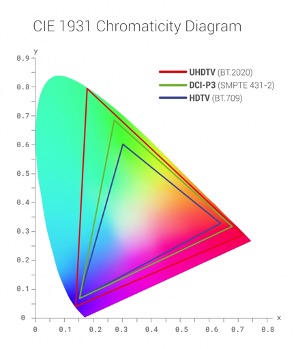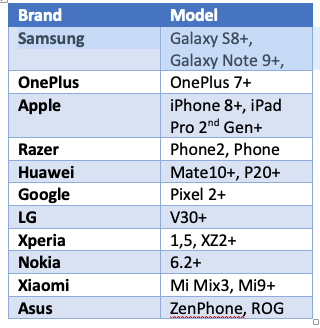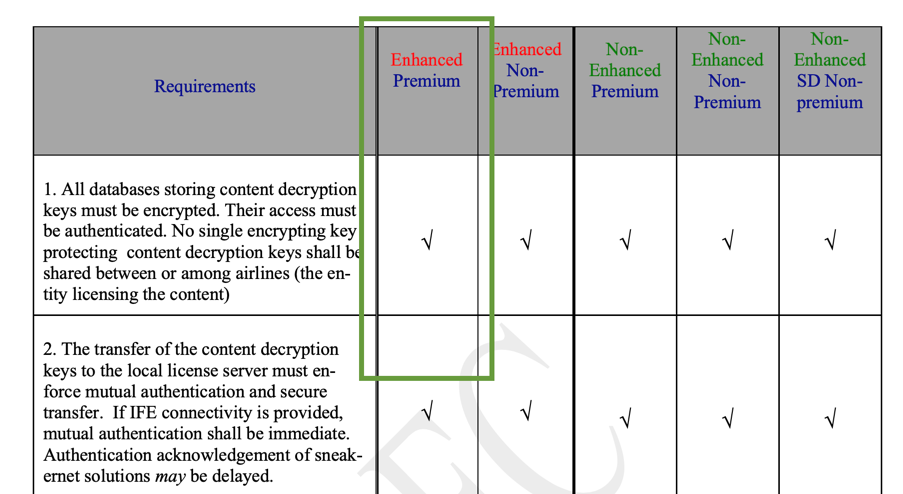Guest Column: An Introduction to HDR
High Dynamic Range or HDR is a technology that has not gained as much attention as other media processing acronyms such as 4k or HD. Why should we consider HDR? The answer is simple — better quality. So much better that some leading content producers stated that the master must be in High Dynamic Range and from there it will trickle down to various versions of a given movie.
Human vision has the wide ability to see scene brightness and adapt to variations in color. The brightness range that humans can see is much higher than the simultaneous contrast range of current displays. HDR displays are here to bridge this gap. In particular, HDR allows bright details in highlights and separation of color details. In general, HDR is about higher brightness, higher contrast and more color.

Standard Dynamic Range (SDR) content has 256 shades of red, blue and green, or about 16 million colors based on its 8 bit capabilities. HDR content uses 1024 shades of these primary colors by using 10 bits definition (more than one billion colors) and can therefore produce more color saturation than SDR content. This is especially true when observing red and green where most of the HDR gain can be noticed.

Image Source: Chromaticity
Color Depth is another characteristic of HDR. It provides smoother transfer of color gradients without noticeable visible steps observed on SDR displays.
Dynamic Range is probably the most noticeable feature of HDR. When a display has limited dynamic range, it can show highlights while crushing the dark elements and vice versa. HDR capable displays can show the peaks of brightness and depth of darkness at the same time.
HDR Overview
When the source content mastered in HDR is shown on displays of various capabilities, its presentation needs to be transferred. For example, color transformation can be transferred with a scene specific metadata that best represents the content’s creative intent. HDR has four main metadata specifications: HDR10, HDR10+, Dolby Vision, and HLG. The latter three allow for dynamic scene or even frame-based adjustment of metadata. The Airline Passenger Experience Association (APEX) recommends HDR10+ and Dolby Vision, leaving HDR 10 as the basic metadata management technology. Phil Watson, APEX Working Group Chair and Chief Engineer - Systems Engineering at Panasonic Avionics will provide you with an overview of APEX HDR specification in his presentation this week at the FTE/APEX virtual event. While HDR 10 and 10+ are based on open standards, Dolby Vision is a proprietary technology and will require a license.
Color Depth is another characteristic of HDR. It provides smoother transfer of color gradients without noticeable visible steps observed on SDR displays.
Dynamic Range is probably the most noticeable feature of HDR. When a display has limited dynamic range, it can show highlights while crushing the dark elements and vice versa. HDR capable displays can show the peaks of brightness and depth of darkness at the same time.
HDR Metadata
When the source content mastered in HDR is shown on displays of various capabilities, its presentation needs to be transferred. For example, color transformation can be transferred with a scene specific metadata that best represents contents creative intent. HDR has four main metadata specifications: HDR10, HDR10+, Dolby Vision, and HLG. The later three allow for dynamic scene or even frame-based adjustment of metadata. APEX recommends HDR10+ and Dolby Vision, leaving HDR 10 as the basic metadata management technology. Phil Watson will provide attendees with an overview of APEX’s HDR specification in his presentation. While HDR 10 and 10+ are based on open standards, Dolby Vision is a proprietary technology and will require a license.

HDR In Aviation
The aviation industry is not always at the cutting edge of technology, right along the most prominent Hollywood technology front runners. We oftentimes operate 10-year-old equipment on an aircraft that is very difficult and expensive to update. Why should we care?
We have customers, that have seen and used HDR quality. Passengers would expect the same on the aircraft, especially in the first-class cabin. I am sure that it’s not the first time airlines were asked for the latest and greatest in consumer electronics to be available on their next flight. Consumers bring their own devices that are already HDR compatible.
Passenger Electronic Devices
Many passengers bring their own devices and you can programmatically determine if these devices are capable of playing HDR content and therefore you can serve them content that takes the best advantage from their display capabilities. Michael Stattman, CEO of CastLabs has a presentation on this at the APEX/FTE event this week.

HDR just looks better. When 1080 HDR content is compared to 4K SDR content you can see a visible difference in quality and you can even save bandwidth and storage. And the amount of detail, the spectrum of colors and luminance scale of HDR content is so much better. Please see Andy Rosen of Sequence Key’s presentation comparing 4K and HDR technologies.
Luminance is one of the main features that separates HDR technology from SD. Luminance expressed in nits can range up to 4,000 nits in some HDR content. The maximal luminance in commercial displays is 1,000 nits. In aviation we do not go that far and expect peak luminance to be at least 250 nits and in the case of HDR10 500 nits. This level of brightness lead to the introduction of “night mode”, that allows tone mapping to the lower maximum brightness to accommodate passengers that do not want to watch a screen.
Another important requirement is the bitrates. APEX specifications show that the bitrates of 18 mbps are required to stream 4K HDR content. These are often not possible to a large number of passengers on a wide body aircraft over the traditional 802.11 wireless networks and therefore fiber or perhaps even Li Fi networks might need to be considered. The larger file sizes stress the importance of highly efficient encoding techniques, making this a natural next step for our industry recommendations.
What does this mean for the aviation industry? Well, airlines need to spend more time on selecting the displays they will be using. If they are contemplating on replacing your existing screens for the ostentatious 4K displays, they might want to revisit this and upgrade even further. There is a section in 0415 v3 document that describes the display requirements. Airlines might be consulting with the content providers for an optimal configuration of these displays to meet the “Film Maker Intent” requirement. This requirement —although it might seem a bit subjective — provides the best viewing experience on or off the aircraft.
Security
Last year we reviewed and approved security configuration updates as they related to the protection of displays, streaming servers and DRM configuration. These are directly applicable to the HDR content, where the requirements for Enhanced Premium content should be implemented.
 Have fun with HDR content. The future for the technology is bright.
Have fun with HDR content. The future for the technology is bright.
Conclusions
Whether you are building a new IFE system, considering an upgrade, or are just curious about what is trending in IFE media streaming, you should not overlook HDR. This technology provides better quality even when compared to standard dynamic range media formats of higher resolutions. If you are an IFE manufacturer building 4K systems, you should consider HDR. Passengers and ultimately airlines will appreciate it.
Author
Juraj Siska is an IT professional with a fruitful history of building secure IT systems. After a successful IT consulting career, he started IdeaNova Technologies which provides high quality IFE products and services to avionics customers worldwide. Juraj has led IdeaNova for over a decade of brining innovation and professionalism to its clients. He graduated from Iowa State with a PhD and is the company’s CEO, overseeing business and technical implementation of the next generation of IFE systems.

